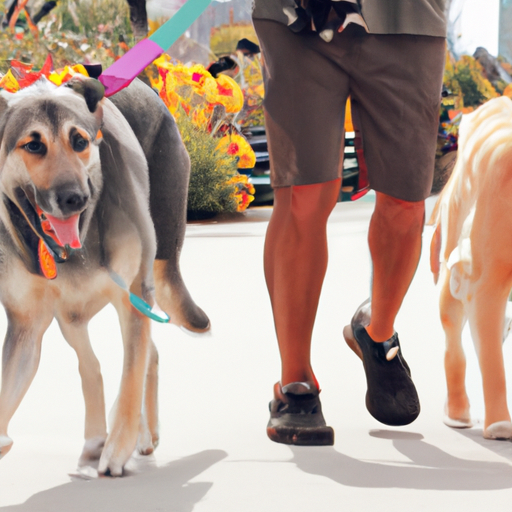Walking multiple dogs at the same time can be a challenging task. This guide, written with caregivers in mind, provides a step-by-step process to ensure a pleasant and stress-free experience.
H2: Understanding Your Dogs’ Temperament and Physical Abilities
First and foremost, it’s crucial to understand your dogs’ temperament and physical abilities. Every dog is different, and their differences can significantly impact your walking routine.
-
Temperament: Some dogs are more energetic and curious, while others may be nervous or aggressive towards other dogs. Understanding your dogs’ temperaments will help you manage their behavior during the walk.
-
Physical Abilities: Consider their size, age, and health condition. Older dogs or dogs with health issues may not be able to walk as fast or as long as younger, healthier dogs.
The table below provides a simple way to record your dogs’ unique characteristics:
| Dog’s Name | Temperament | Physical Abilities |
|---|---|---|
H2: Training Your Dogs for Walking Together
Before you venture out, it’s essential to train your dogs for walking together. It might take some time, but with patience and consistency, your dogs will learn to walk side by side without any issues.
-
Leash Training: Start by leash training each dog individually. This will help them get used to the leash and understand that they need to stay by your side during walks.
-
Walking Together: Once they’re comfortable with the leash, start walking them together. Keep the walks short initially, and gradually increase the distance as they get better at walking together.
H2: Using the Right Equipment
The right equipment can make a big difference in how easily you can handle two dogs at once.
-
Double Leash: A double leash or coupler can be a useful tool. It allows you to control both dogs with one hand, leaving the other hand free.
-
Harnesses: Harnesses are often more comfortable and safer for dogs than collars. They distribute pressure evenly across the chest and back, reducing the risk of injury.
H2: Establishing a Routine and Managing the Walk
Establishing a routine can help your dogs understand what to expect during their walks.
-
Walk at the Same Time Every Day: Dogs are creatures of habit. Walking at the same time each day can help them understand when it’s time for a walk.
-
Control the Pace: Don’t let your dogs control the pace. You should be the one leading the walk, not them.
-
Manage Distractions: Dogs can get distracted easily. Be prepared to manage distractions like other dogs, squirrels, or loud noises.
H2: Dealing with Challenges
Walking two dogs can present some challenges. It’s important to stay calm and patient, even when things don’t go as planned.
-
Pulling: If one or both dogs start pulling, stop walking. Wait until they calm down before continuing.
-
Aggression: If one or both dogs show aggression towards other dogs or people, try to divert their attention. Use treats or toys to distract them.
FAQ
Q1: Can I walk two dogs of different sizes together?
Yes, but you might need to adjust your walking pace to accommodate the smaller or slower dog.
Q2: What if my dogs don’t get along during walks?
Try walking them separately for a while. Use this time to work on their leash manners before attempting to walk them together again.
Q3: How long should I walk my dogs?
The length of the walk depends on your dogs’ age, health, and breed. Generally, a 30-minute walk is considered sufficient for most dogs.
Q4: What if my dogs keep getting tangled up in the leash?
Consider using a double leash or coupler. This can help keep the leashes from getting tangled.
Q5: What should I do if one dog wants to stop and sniff while the other wants to keep walking?
Try to encourage the sniffer to keep moving, but also allow them some time to explore. Balancing the needs of both dogs can be a challenge but is crucial for a successful walk.
Remember, walking two dogs at the same time requires patience and practice. But with the right approach, it can also be a fun and rewarding experience. Happy walking!



